The Triumph Stag contained all the ingredients to become one of the greatest cars in British automotive history. Its stunning styling, clever interior, and V8 engine should have combined to make this car a sales winner. Sadly, it was a victim of an imploding British Leyland and never met expectations. However, those that have survived in good order are typically excellent cars providing an enjoyable classic car ownership experience. That seems true with this 1973 example. It presents well, has been part of the same family for over four decades, and its V8 engine is freshly rebuilt. The seller has listed the Stag here on Craigslist in Bloomfield, New Jersey. They set their price at $19,900 OBO, and I must say a big thank you to Barn Finder Mitchell G. for spotting this beauty.
When it broke cover in 1970, the Stag received a positive reception from the motoring fraternity. The response is understandable because legendary designer Giovanni Michelotti produced one of the most attractive cars of that era when he penned its lines. Our feature Stag rolled off the line in 1973, with its first owner choosing to cloak its beautiful exterior in striking Pimento Red. The seller confirms it received a repaint, but it is unclear when this occurred. They have been its custodian for over forty years, and it carries the hallmarks of a car that has been treated respectfully. The paint shines beautifully, with no significant flaws or defects. The same applies to the panels, while the underside shots confirm the car has avoided the rust issues that sometimes plague these classics. The hardtop is in good order, and the seller states there is also a newer soft-top. I see no problems with the trim or glass, and the distinctive five-spoke wheels are free from stains and physical damage.
Stag interiors often deteriorate over time, but this car has avoided that fate. The veneer trim around the shifter shows some age and is one of the few items deserving of criticism. Replacement trim is available, but it might be worth removing it and attempting a restoration in a home workshop. Modern timber finishes can make an enormous difference, and this approach would be cheaper than sourcing a new part. The Black upholstered surfaces are free from significant wear, the carpet is tidy, and the dash and pad haven’t succumbed to UV deterioration. Triumph marketed the Stag as a Grand Tourer and had the Mercedes SL range firmly in its sights. Therefore, they equipped the interior with air conditioning, power windows, a traditional gauge cluster with a tachometer, a tilt wheel, and an AM radio. The A/C doesn’t blow cold, and the factory radio has disappeared in favor of a modern CD player. Otherwise, this interior is as it left the factory.
Many automotive corporations with multiple marques under their umbrellas encourage component sharing to minimize development costs. Some people question why Triumph developed its own V8 to power the Stag rather than utilizing the 3.5-liter Rover V8. This occurred for multiple reasons, but the fact that the Stag’s development was running behind schedule and significant reengineering was required for the Rover powerplant to fit saw Triumph adopt its own motor. History shows that many Stag owners retrofitted the Rover motor, but this Stag remains numbers-matching. The 3.0-liter V8 should develop 145hp and 170 ft/lbs of torque, which feeds to the rear wheels via a four-speed manual transmission. The engine output isn’t staggering by modern standards, and although the car’s curb weight of 2,811 lbs is relatively modest, the journey from 0-60mph took 9.3 seconds. However, the Stag was at its best when pointed at the open road and could comfortably cruise at 70mph all day. That should be the case with our feature car because it has only clocked 5,000 miles since the seller performed an engine rebuild. They added an aluminum radiator to control temperatures, and recommend an in-person inspection to reveal how well this classic runs and drives.
I remember one motoring journalist saying that when any marque fell under the control of British Leyland, it was a diplomatic way of describing it as doomed. Certainly, the roll-call of brands that disappeared is long and includes Morris, Austin, Riley, Wolseley, and Triumph. The Stag promised so much but was hamstrung by development delays and a company tearing itself apart with industrial disputes and quality control issues. That isn’t to say it didn’t produce good cars because any vehicle that survives over five decades in good order can’t be considered a lemon. That is undoubtedly the case with this 1973 Triumph Stag. The seller’s price looks competitive compared to recent successful sales results, and I won’t be surprised if it finds a new home fairly quickly.
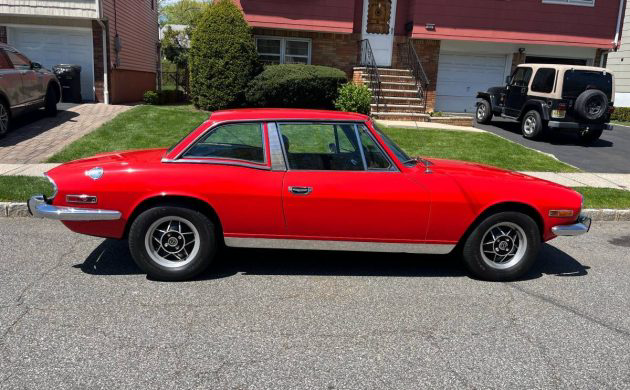
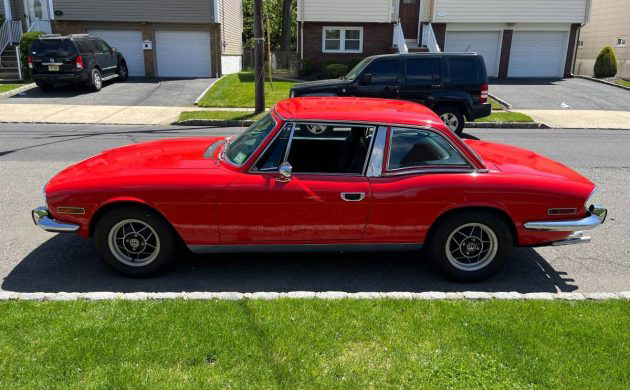
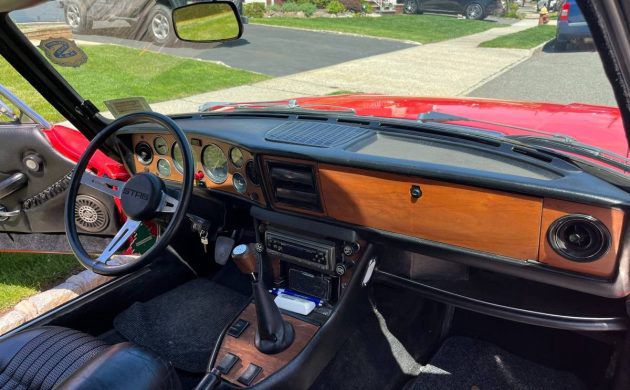
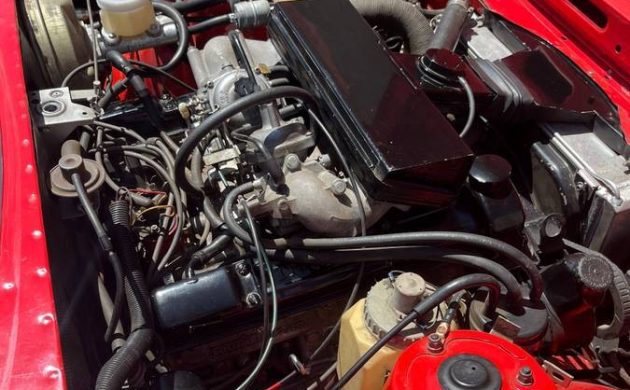
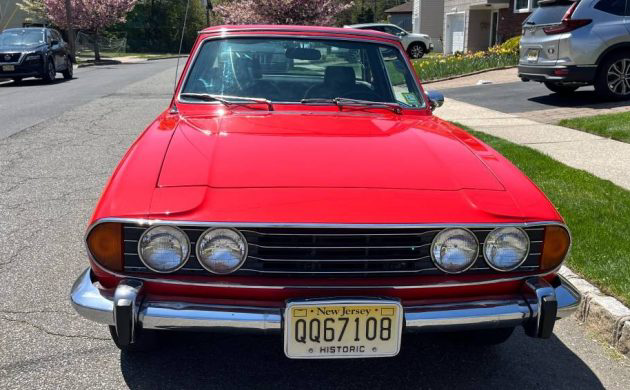





The next owner would be wise to keep a close eye on the car’s coolant level. The water pump is mounted at the top of the engine block, so it doesn’t take much coolant loss to put the coolant level below the pump, rendering it useless. This is just one of the engine’s problems, none of which can be solved short of an engine swap. Numbers-matching is great for a Stag that sees limited use as a concours show car, but for a Stag that’s going to be driven, an engine swap to Rover’s 3.5L V8 (nee Buick’s 3.5L V8) makes more sense.
That’s an excellent point, CCFisher. Thank you so much for your input. I know that quite a few engines suffered that fate, which is why many transplants occurred. A couple of companies produce coolant warning alarms for the Stag that notify the driver of low levels. I know installing one requires modifying what is an essentially original car, but it could be cheap insurance. The timing chain is the other weak point, but that should have been changed during the rebuild.
TV trivia time,, who here remembers the 1973 Adam-12 episode, “Harbor Division”, where they pull over a guy with a TV box strapped to the roof? That car was a red ’73 Triumph Stag w/ hardtop, only with wires. I thought an unusual choice for a car on TV, but that day, the supplier was a bit lean on cars, and , “sorry, Mr. Webb, all we have is a Triumph Stag”,,,
As a stout British roadster fan, never cared for the Stag, and I wasn’t alone. The biggest plus, it has a cam chain, not a belt, but too many Italian overtones. It’s not a Spitfire on steroids. The dash and steering wheel angle, right out of a Fiat. Speaking of the motor, got to be a sweet running engine. Then there was the cost. I read, these cost, right around $6grand new, $400 more than a Corvette, but not the Jensen Healey at $9500. The time for fast British roadsters was in the 60s, and by ’73, things were changing, fast, and I think we were just burned out on foreign roadsters. Of the more than 25,000 Stags built, it’s estimated only 3,000 came here. Numbers don’t lie and a classic swing and a miss.
In 1973 I pulled into a dealership in Houston, TX to look at the new models up-close. The one I looked at had an MSRP of 7,000. The only option was an AC. They wouldn’t have been able to give it away without that option.
mmmmm my heart always swells when I read “recommend in-person inspection.”
The fact that this Stag has lasted 50+ years doesnt really speak to the quality of the build. BF features Yugo’s and Chevy Vega’s on here, too.
Thought I’d read years ago that the Stag V-8 was engineered as a companion to the slant 4 to be used in the Triumph TR7? Being able to machine both engines on the same equipment was a cost saving effort.
The Stag motor was not so much a companion to the slant 4 from the TR7. It was building a V8 out of 2.problematic 4 cylinders. So take all the issues of the TR7 motor, water pump location, warping heads, non parralel head studs ( so disimular clamping forces ) wimpy timing chain. And double them. Any wonder they had issues.